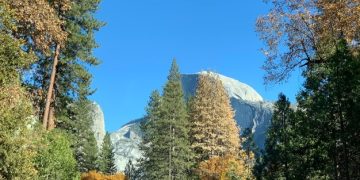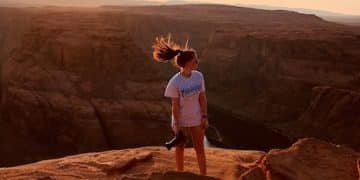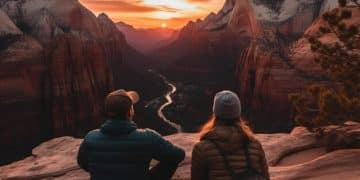US National Parks on a Budget: Frugal Travel Guide 2025
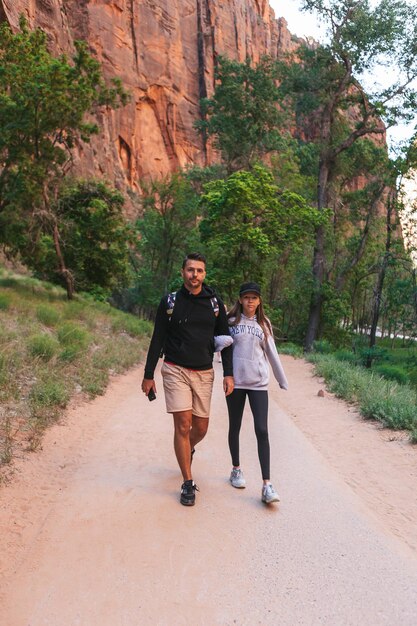
Navigating US National Parks on a budget for 2025 involves strategic planning, leveraging free passes, opting for budget-friendly accommodations like camping, packing smart to avoid excessive spending, and identifying less crowded, more affordable park alternatives to maximize experience without financial strain.
Dreaming of exploring the breathtaking landscapes of America’s national parks but worried about the cost? For many, the idea of a national park adventure conjures images of expensive flights, pricey lodging, and costly souvenirs. However, embarking on an unforgettable journey through US National Parks on a Budget: A Comprehensive Guide for Frugal Travelers in 2025 is not only possible but increasingly accessible with smart planning and strategic choices. This guide will equip you with the insights and actionable tips to experience the grandeur of these iconic destinations without breaking the bank.
Mastering the Entry Fee: Passes and Free Days
The first significant hurdle for budget travelers often comes down to park entrance fees. While seemingly small on their own, these fees can quickly accumulate, especially when planning to visit multiple parks across the year. Understanding the options available for fee waivers or consolidated passes is crucial for significant savings. The National Park Service offers several passes designed to reduce or eliminate entry costs, making them invaluable for the frugal adventurer.
One of the most valuable assets for frequent park visitors is the America the Beautiful – The National Parks and Federal Recreational Lands Pass. This annual pass covers entrance, standard amenity fees, and day-use fees for a driver and all passengers in a personal vehicle at per-vehicle fee areas, or up to four adults at per-person fee areas. Given its comprehensive coverage, this pass quickly pays for itself if you plan to visit three or more parks within a 12-month period. For 2025, anticipating its price stability, it remains the gold standard for multi-park exploration.
Leveraging Annual Passes for Savings
Beyond the standard annual pass, specific demographics can qualify for reduced or free passes. For instance, the Senior Pass offers a lifetime pass for U.S. citizens or permanent residents aged 62 or over, providing access to national parks and federal recreational lands for a minimal, one-time fee. Similarly, military personnel, individuals with permanent disabilities, and even fourth-grade students can qualify for specialized passes. Checking eligibility criteria on the NPS website before your trip can unlock substantial savings.
- Discover the America the Beautiful Annual Pass: Your gateway to limitless adventures.
- Explore eligibility for Senior, Military, and Access Passes: Free or reduced entry for qualifying visitors.
- Utilize Junior Ranger Programs: Often include free entry for participating children, adding educational value.
Another often-overlooked opportunity for free entry are the designated fee-free days. The National Park Service typically announces several days throughout the year when all entrance fees are waived for all visitors. While these days can be more crowded, they offer a perfect chance to experience some of the nation’s most popular parks without the entry cost. Planning your visit around these dates, if your schedule allows, can be a highly effective budget strategy.
Finally, always check individual park websites for specific fee structures and any local passes that might be available. Some parks, especially those managed by states or local entities, may have their own pass systems or unique ways to access trailheads or specific attractions. A quick search before you go can uncover these localized savings opportunities, ensuring you’re not paying more than you have to.
Accommodation Hacks: Sleeping Under the Stars and Beyond
After navigating entry fees, accommodation presents the next major budget challenge. Hotel stays near popular national parks can quickly deplete a travel fund. Thankfully, a variety of alternatives exist, ranging from rustic to surprisingly comfortable, all designed to keep costs down. Embracing these options is key to a truly frugal national park adventure.
Camping is, without doubt, the most quintessential and budget-friendly accommodation option within national parks. Most parks offer both developed campgrounds with amenities like restrooms and water, and primitive backcountry sites for a more rugged experience. Campground fees are significantly lower than hotel rates, often ranging from $10 to $30 per night, varying by park and site features. Booking well in advance is critical, especially for popular parks and during peak seasons, as sites fill up rapidly.
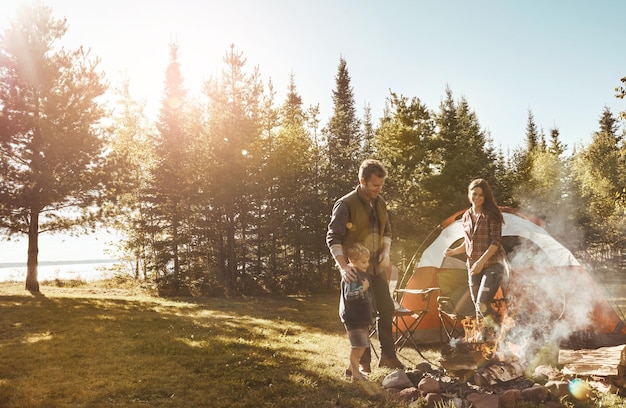
Finding Affordable Stays Inside and Outside Parks
For those new to camping or without their own gear, consider renting equipment or even glamping sites that offer tents with beds and basic comforts. These can be a stepping stone to full-fledged camping, providing a taste of the outdoors without the initial investment in gear. Additionally, many parks have first-come, first-served campsites, which require early arrival but can save travelers who plan last-minute trips.
- Explore diverse camping options: From primitive backcountry to developed campgrounds.
- Consider glamping or yurt rentals: A comfortable compromise between camping and traditional lodging.
- Utilize online booking platforms: Secure your spot well in advance, especially for popular parks.
If camping isn’t your preference, consider alternative accommodations outside the park boundaries. Small towns adjacent to national parks often offer more affordable motel or Airbnb options compared to in-park lodges. Staying 15-30 minutes outside the park can significantly reduce nightly rates, though you’ll need to factor in daily travel time and gas costs. Websites like Hipcamp and The Dyrt also list private campsites, RV parks, and unique rentals on private land, sometimes offering better value and more unique experiences than official park sites.
Another innovative approach is to look into volunteer opportunities within national parks. Some programs offer free or reduced-cost lodging in exchange for a certain number of volunteer hours. While this requires a commitment of time, it can be an incredibly rewarding and budget-friendly way to immerse yourself in the park environment. Workamping, a type of work-camping, allows RVers to trade labor for free campsites, a popular choice for long-term travelers.
Finally, remember that hostels, when available near parks, can provide dormitory-style lodging at rock-bottom prices. While less common in remote park areas, they are a fantastic option for solo travelers or small groups looking to meet other adventurers and save money.
Strategic Food Planning: Eating Well for Less
Food expenses can quickly escalate during any trip, and national park visits are no exception. Grabbing meals at park lodges, snack bars, or nearby restaurants adds up, especially over several days. To truly master a budget national park trip, meticulous food planning is essential. This often means bringing your own provisions and preparing most of your meals.
Before you even leave home, plan a detailed menu for your trip, focusing on non-perishable or easily transportable items. Purchasing groceries at a supermarket outside the park before you arrive is almost always cheaper than buying them at a park general store or small town market. Think about meals that require minimal cooking or can be assembled quickly: sandwiches, wraps, pasta salads, oatmeal, and trail mix are excellent choices.
Smart Grocery Shopping and Meal Prep
Packing a cooler with ice (or dry ice for longer trips) is indispensable. This allows you to bring perishable items like fresh fruits, vegetables, cheeses, and pre-cooked meats. Keep reusables in mind—reusable water bottles, coffee mugs, and food containers reduce waste and eliminate the need to buy bottled water or single-use items, saving both money and the environment.
- Plan detailed menus: Focus on easy-to-prepare, non-perishable items.
- Shop outside the park: Stock up on groceries before reaching expensive park stores.
- Pack a sturdy cooler: Essential for storing fresh produce and drinks.
Consider simple cooking methods. A portable camping stove and a few basic pots/pans can unlock a world of affordable meal possibilities, from morning coffee to hearty dinners. Even without a stove, many campsites have fire pits, perfect for grilling foil-wrapped meals or roasting hot dogs. If you’re not camping, packing picnic lunches eliminates the need for expensive sit-down meals during the day, freeing up your budget for a single, well-deserved restaurant meal as a treat, if desired.
Snacks are also a major area for savings. Instead of buying individual bags of chips or candy at park stores, buy larger quantities beforehand and portion them out. Nuts, dried fruit, granola bars, and homemade energy bites are nutritious, filling, and significantly cheaper in bulk. Don’t forget electrolyte mixes or flavored drink powders to add to your water, ensuring hydration without the cost of sodas or juices.
Ultimately, eating well on a budget in national parks is about foresight. The more you prepare in advance, the less you’ll rely on expensive impulse purchases within the parks, ensuring more of your budget goes towards experiences rather than inflated meal costs.
Transportation Triumphs: Getting Around Without Splurging
Getting to and around national parks can be one of the most significant expenses, particularly if you’re traveling a long distance or renting a vehicle. However, with careful planning, you can minimize transportation costs and maximize your exploration of these vast natural wonders. For 2025, anticipating continued fuel price fluctuations, efficient transportation strategies are more important than ever.
The most common mode of transport within national parks is a personal vehicle. While this offers flexibility, it comes with fuel costs. To mitigate this, plan your routes efficiently, combining nearby attractions to reduce unnecessary driving. If traveling with a group, carpooling significantly cuts down on gas expenses per person. Before embarking on your journey, perform basic vehicle maintenance to ensure optimal fuel efficiency and avoid costly roadside repairs.
Optimizing Your Park Commute
Consider flying into a regional airport instead of a major international hub, as smaller airports sometimes offer cheaper flights. Then, rent a fuel-efficient car or look into ride-sharing options if available. For those planning to visit multiple parks, mapping out a logical sequence that minimizes backtracking can save both time and fuel.
- Research park shuttle systems: Many parks offer free inner-park transportation.
- Plan efficient driving routes: Group attractions logically to minimize fuel consumption.
- Consider carpooling: Splitting costs with travel companions drastically reduces expenses.
Many popular national parks, such as Zion, Grand Canyon (South Rim), and Acadia, operate free shuttle bus systems during peak seasons. These shuttles are invaluable for budget travelers, eliminating the need to drive, search for parking (which can be scarce and costly), and contribute to vehicle emissions. Check the park’s official website for shuttle schedules and operational dates, as they often vary by season. Relying on these services allows you to relax and enjoy the scenery without the stress of navigating park traffic.
Biking and hiking are also excellent, free ways to explore certain areas of national parks. Many parks have designated bike trails, and almost all offer extensive hiking networks. If you bring your own bike, you save rental fees. Even if you rent one for a day, it can still be cheaper than continually moving your car or paying for specialized tours. Embrace these active transport methods for a more immersive and cost-effective experience.
For cross-country travel to reach a national park, consider alternative transport methods like long-distance buses (e.g., Greyhound) or even Amtrak, which offers scenic routes to destinations surprisingly close to some national parks. While potentially slower, these options can be significantly cheaper than flying or driving solo, especially from distant locations.
Gear and Gadgets: Packing Smart, Spending Less
Outfitting yourself for a national park adventure often involves acquiring specialized gear, which can quickly become a significant expense. However, a frugal traveler understands that necessity doesn’t always mean buying brand new. Smart choices in gear acquisition and packing can save hundreds of dollars, allowing you to invest more in experiences rather than equipment.
First, take inventory of what you already own. Many common items like comfortable walking shoes, a basic backpack, and everyday clothing can serve perfectly well for moderate hikes and sightseeing. You don’t need top-of-the-line technical gear unless you’re planning extreme backcountry expeditions. Prioritize multi-functional items; a bandana can be a headband, sun protection, or a makeshift towel.
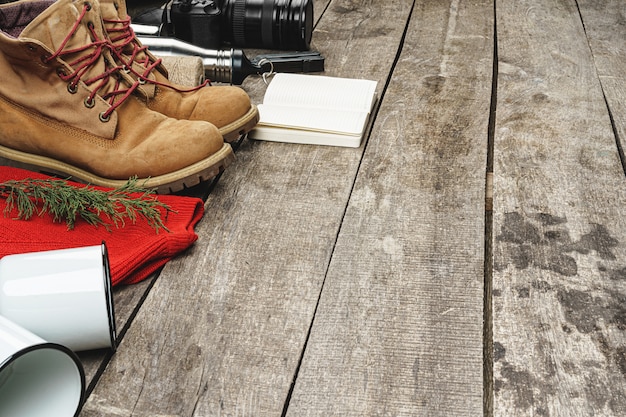
Thrifty Gear Acquisition and Smart Packing
When you do need to acquire gear, consider borrowing, renting, or buying used. Friends and family might have extra camping equipment, a larger cooler, or a spare hiking pole they’d be willing to lend. Outdoor gear rental shops are becoming more common, offering everything from tents and sleeping bags to backpacks and even bear canisters for a fraction of the purchase price. This is particularly practical for items you’ll only use occasionally.
- Borrow or rent gear: Avoid purchasing expensive items for infrequent use.
- Shop second-hand: Explore thrift stores, consignment shops, and online marketplaces.
- Invest in versatile essentials: Choose items that serve multiple purposes.
Online marketplaces (like eBay, Facebook Marketplace, and specialized gear exchange groups) and local second-hand outdoor stores are treasure troves for gently used equipment. You can often find high-quality brands at steeply discounted prices. Garage sales and thrift stores can also yield unexpected finds, especially for clothing layers like fleeces and rain jackets.
As for packing, aim for efficiency. Over-packing leads to heavier luggage, potentially higher airline fees, and unnecessary bulk. Stick to essentials, focusing on layering clothing to adapt to varying temperatures. Quick-drying fabrics are a bonus, allowing you to wash and re-wear items, reducing the total amount of clothing you need to bring.
Don’t forget the small but essential items that can save you money and headaches: a first-aid kit with basic supplies (band-aids, pain relievers), sunscreen, insect repellent, a headlamp, and a multi-tool. Buying these in bulk or from discount stores before your trip is far more economical than purchasing them at inflated prices near park entrances. A portable power bank for charging devices can also prevent costly reliance on public charging stations.
Finally, embrace digital resources where possible. Download park maps and trail guides to your phone before you lose service, reducing the need to buy physical maps. Many parks also offer free online audio tours or informational apps that enhance your visit without an additional cost. By making smart choices in gear and gadgets, your national park adventure can be both memorable and affordable.
Hidden Gems and Less Traveled Paths: Park Alternatives
While iconic parks like Yellowstone, Yosemite, and Grand Canyon offer undeniable grandeur, their popularity often translates to higher costs, larger crowds, and limited availability of budget options. For the truly frugal traveler in 2025 seeking a balance of natural beauty and affordability, exploring less-traveled national parks or alternative public lands can be a game-changer. These hidden gems often provide similar experiences at a fraction of the cost and with a greater sense of solitude.
Consider dedicating a significant portion of your trip, or even your entire trip, to one of the lesser-known national parks. Parks like Great Basin National Park in Nevada, with its ancient bristlecone pines and Lehman Caves, or Congaree National Park in South Carolina, boasting old-growth floodplain forest, offer unique natural wonders without the throngs of tourists or premium prices. Their smaller visitor numbers often mean easier access to campsites, less crowded trails, and more affordable lodging options in nearby towns.
Discovering Affordable Natural Wonders
Beyond national parks, the United States is home to an extensive network of public lands managed by various agencies, including the Bureau of Land Management (BLM), National Forests, and National Wildlife Refuges. These lands often have significantly lower (or even no) entrance fees and boast abundant opportunities for free dispersed camping. Many offer landscapes as stunning as national parks, from the rugged mountains of a National Forest to the vast deserts managed by the BLM in the Southwest.
- Explore lesser-known National Parks: Avoid peak crowds and premium pricing.
- Visit National Forests and BLM lands: Abundant free camping and recreational opportunities.
- Utilize State Parks and local natural areas: Often offer unique regional beauty at lower costs.
State Parks are another excellent alternative. Every state boasts a system of parks that showcase its unique natural and cultural heritage. While they typically have entrance fees, these are often lower than national park fees, and annual state park passes can offer great value if you plan to visit multiple parks within a single state. Many state parks also offer well-maintained campgrounds and diverse recreational activities comparable to national parks, but with fewer visitors.
When selecting your alternative destination, research the specific kind of experience you’re seeking. If it’s towering mountains, a national forest might suffice. For desert landscapes, BLM land in the Southwest could be perfect. If you prefer lush forests, a state park in the Southeast might be ideal. The key is to broaden your search beyond the most famous names and embrace the diversity of America’s public lands.
By opting for these hidden gems and alternative public lands, you can stretch your budget further, experience more genuine tranquility, and discover natural beauty that rivals the famous sites. It requires a bit more research, but the rewards—both financial and experiential—are well worth the effort for the frugal traveler.
Sustainability and Responsible Travel: Budget-Friendly for the Planet
Traveling on a budget doesn’t just mean saving money; it also presents an opportunity to travel more sustainably and responsibly, benefiting both your wallet and the environment. Many eco-friendly practices naturally align with frugal travel habits, making it easier to reduce your footprint while enjoying the nation’s parks. For 2025, conscious travel choices are gaining even more importance.
One of the simplest yet most impactful sustainable practices is minimizing waste. This directly translates to budget savings. By bringing reusable water bottles, coffee mugs, and food containers, you eliminate the need to buy single-use plastic bottles, cups, and takeaway containers. Not only does this reduce litter in our precious parks, but it also saves you the continuous cost of purchasing new beverages. Portable water filters can also allow you to safely drink from natural sources (where permitted), further reducing your reliance on bottled water.
Eco-Conscious Choices on a Budget
Reducing energy consumption is another critical aspect. When camping, rely on natural light during the day and use efficient headlamps or solar-powered lanterns at night. If staying in lodges or motels, remember to turn off lights and air conditioning when leaving the room. Opting for unpowered campsites or off-grid accommodations reduces your energy footprint and typically comes with a lower nightly rate.
- Minimize waste: Use reusable bottles, mugs, and food containers.
- Reduce energy consumption: Embrace natural light and efficient lighting.
- Support local economies: Buy local and minimize food waste to benefit communities.
“Leave No Trace” principles are fundamental to responsible park visitation and often align with budget travel. Packing out everything you pack in means less reliance on expensive, often limited, park waste disposal services. Staying on marked trails prevents environmental damage, which, while not a direct budget saving, contributes to the long-term health of the parks, ensuring they remain vibrant to visit for years to come. This also prevents accidental damage to your gear or yourself, avoiding potential medical costs.
Choosing to support local businesses adjacent to parks, especially those committed to sustainable practices, can also be a budget-friendly choice. Local farmers’ markets often offer fresher produce at lower prices than large grocery chains, and your money directly supports the community that often stewards the land around the parks. Cooking your own meals from these local ingredients not only saves money but fosters a connection to the place you’re visiting.
Finally, consider the environmental impact of your transportation. As previously mentioned, carpooling, using park shuttles, biking, and hiking not only save money on fuel and parking but also reduce carbon emissions. Every effort to lighten your impact contributes to a more sustainable travel experience, proving that responsible travel can truly go hand-in-hand with budget-conscious adventuring.
| Key Strategy | Brief Description |
|---|---|
| 🏞️ Annual Passes | Invest in an America the Beautiful pass for unlimited entry; check for free days. |
| ⛺ Camping/Alternatives | Prioritize camping or budget accommodations outside park boundaries. |
| 🍎 Self-Catered Meals | Plan and pack all your food, cooking most meals to avoid costly park dining. |
| 🚌 Shuttle Use | Utilize free park shuttle systems to save on fuel and avoid parking fees. |
Frequently Asked Questions About Budget National Park Travel
▼
Yes, the National Park Service typically designates several fee-free days throughout the year when all entrance fees are waived for all visitors. These dates are usually announced in late fall or early winter for the upcoming year, so check the official NPS website for the 2025 schedule to plan accordingly.
▼
Camping is by far the most budget-friendly accommodation option within national parks, with fees significantly lower than lodges. Booking well in advance is crucial due to high demand. For those without camping gear, consider renting or looking for nearby budget motels/Airbnbs outside park boundaries if camping isn’t feasible.
▼
Absolutely! Bringing your own food and preparing most of your meals is one of the most effective ways to save money. Grocery stores outside the park are much cheaper than in-park options. Pack a cooler with perishables and consider a portable stove for easy, budget-friendly meal preparation.
▼
Many popular national parks offer free shuttle bus systems (e.g., Zion, Grand Canyon) that eliminate the need for personal vehicles, saving on fuel and parking fees. Carpooling with companions, biking, and extensive hiking are also excellent ways to explore without incurring significant transportation costs.
▼
Yes, consider visiting lesser-known national parks like Great Basin or Congaree for a more solitary and affordable experience. Additionally, vast expanses of public lands managed by the Bureau of Land Management (BLM) and National Forests often offer similar natural beauty, minimal fees, and free dispersed camping opportunities.
Conclusion
Experiencing the unparalleled beauty and majesty of US national parks on a budget for 2025 is not merely a dream, but a highly achievable goal for the diligent and resourceful traveler. By strategically planning for entry fees, opting for smart accommodation, bringing your own provisions, maximizing efficient transportation, and making wise choices about gear, you can unlock incredible adventures without financial strain. Moreover, embracing these frugal methods naturally aligns with principles of sustainable and responsible travel, allowing you to connect with nature more deeply while preserving these precious landscapes for future generations. Your next unforgettable national park journey awaits, proving that grand adventures don’t always require a grand budget.
